
The America’s Industrial Revolution workshops at The Henry Ford will draw together selected summer scholars with leading humanities guest scholars and museum host scholars for unique enrichment exercises centered on the impact of industrialization. The workshops are designed to encourage your curiosity and deepen your knowledge on the subject, engage you with innovative methods of transmitting enthusiasm and content to students, and empower you to use cultural resources to enliven the teaching and learning of history.
Summer Scholars will explore the diverse ways that Americans experienced social change between the 1760s and the 1920s through lecture/discussions and by visiting with museum curators at 12 of the 80 historic sites interpreted in Greenfield Village: Thomas Edison’s Menlo Park Laboratory, Hermitage Plantation Slave Quarters, 1760s Daggett Farm, 1880s Firestone Farm, a railroad roundhouse, and a 19th century grist mill for instance. In addition, time is set aside each day for exploration of archival sources in the Benson Ford Research Center and to work on individual lesson plans for implementation back home.
The week’s activities will culminate with a visit to a related National Historic Landmark, the Ford Motor Company’s Rouge Industrial Complex. Taken as a collective entity, there is no better landmark site in this nation to study the range and diversity of America’s rise to industrial dominance. Reliable scholarship, energetic scholars and the resources of the museum will make this workshop thematically rich. Your questions and contributions as classroom teachers will make it educationally powerful.
Five specific themes will guide our explorations. Daily themes will be as follows:
Monday: The transition from home to factory production
Tuesday: The mechanization of farming
Wednesday: Steam power in transportation and manufacturing
Thursday: The increasing significance of science and systematic invention
Friday: The impact of the assembly line method of mass production
As a discrete topic, the Industrial Revolution can be summarized as the story of American society evolving from a colonial outpost on the periphery of the world’s dominant imperial system to the world’s largest industrial producer. Scholars continue to debate the relationship between business organization and technological innovation, economic change and social class formation, and the impact of industrial transformation on the physical and social landscape of America.
America’s Industrial Revolution is not merely a topic we hope teachers believe is important; rather, it is a topic that grade 5-12 teachers already are required to address. Too often it is portrayed as a post-Civil War phenomenon, with Rockefeller, Carnegie and Ford as the key players. Early inventors like Whitney, Fulton, Slater and Howe receive brief attention but too little emphasis is placed on the everyday results for ordinary people. Using the resources of Greenfield Village, this workshop will expand this chronology, connecting pre-Civil War changes in family farming, transportation and urban crafts to later industrial developments. This topic is ripe for historic site, material culture and living history interpretations—educational opportunities that exist in every part of the country and in which The Henry Ford excels. We want to bring professionals together to develop materials and methods to engage students more actively and authentically in examining America’s Industrial Revolution.
In sum, participants in this program will have the opportunity to see, hear, smell, taste and touch as well as read and discuss America’s Industrial Revolution.

Summer Scholars attending the workshop will be expected to complete all the assigned readings and actively participate in all lectures, discussions and field experiences. Readings and other materials will be made available to Summer Scholars before the workshop itself. The Socratic Method (asking questions and talking to learn rather than sitting and listening) will be a rule for all our activities. Summer Scholars will develop and share age-appropriate lesson ideas that align with their state’s standards. Materials and lesson plans will be posted to a website so that we can continue to share ideas and materials after the workshop.
The Daily Schedule* |
| 8:30am-9am |
Introduction to the day’s activities |
| 9am-10:30am |
Guest scholar’s lecture and discussion |
| 10:30am-10:45am |
Morning break |
| 10:45am-3pm |
Exploring sites in Greenfield Village; Lunch |
| 3-3:30pm |
Afternoon Break |
| 3:30-5pm |
Curriculum development activities |
| 5-6pm |
Sharing projects and wrapping-up the day |
*tentative/subject to change |

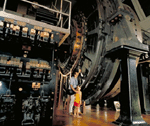 |
Made in America in Henry Ford Museum is an exhibit that explores the legacy of American innovators from the 18th to 20th century who made America a manufacturing superpower. We will begin our week-long study of America’s Industrial Revolution with a guided tour of the exhibit’s artifacts, which include operating steam engines. |
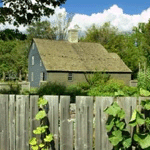 |
The Daggett Farm House (ca 1760) is a typical middle-class colonial American farmstead. By 1772, the farm consisted of 160 acres of land. The Daggetts practiced a modified form of subsistence agriculture. Rather than growing a cash crop for market, they raised a wide variety of crops for home consumption. If the Daggetts had a surplus of goods they could engage in barter or trade among their neighbors. This site helps us understand life prior to widespread industrialization in the Americas. |
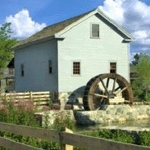 |
Loranger Gristmill (1837-1925) was powered by a waterwheel and represents an important link between agriculture and mechanization. Farmers relied upon mills such as this one to convert their crops (particularly corn and wheat) into useful products that could be consumed or sold. As technology changed, so too did the gristmill. With the development of better transportation networks, milling became less and less localized. Wheat could be shipped greater distances for processing. |
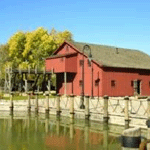 |
Tripp Up-and-Down Sawmill (ca 1855) was built in Tipton, Michigan and represents the development of lumber sawing from a slow, hand process to a high-speed, mechanized industry. The sawmill’s engine drives the blade at 120 strokes a minute and can cut a sixteen-foot log in twelve minutes. Later circular saws could do the same work in fifteen seconds! |
 |
Weaving Shop was built in the second quarter of the 19th century in Bryan County, Georgia. As it stood on its original site, most of the first floor of the Weaving Shop was open, allowing access for horses to the drive mechanism for a cotton gin located on the upper floors, which were enclosed. When it was initially rebuilt in Greenfield Village the first floor remained open, but by 1944 the entire first floor had been enclosed and a one-story well had been added. |
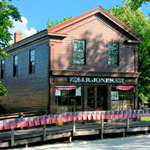 |
J.R. Jones General Store (ca 1880) was ran by J.R. Jones and sold products such as coffee, sugar, fabric and shoes. The second floor had a variety of uses over the years – including a roller skating rink, a place to see shows and the living quarters for the Joneses. When Henry Ford put this store in Greenfield Village, he asked J.R. Jones to visit the store on its new site. |
 |
Susquehanna Plantation (ca 1860) was a 700-acre Maryland agricultural plantation worth $118,000 in 1860. Susquehanna Plantation cultivated about 60 acres of tobacco in 1860. As tobacco cultivation was a very labor-intensive process, the Carroll family relied on enslaved people to make a profit. A dependence on labor prevented the Carroll family from investing in new technologies. |
 |
Hermitage Slave Quarters (ca 1850) existed on the Hermitage Plantation near Savannah, Georgia. This plantation consisted of 400-600 acres and housed 201 enslaved people in 52 buildings. As an industrial plantation, Hermitage relied on a system of enslaved labor very different from those at primarily agricultural plantations. |
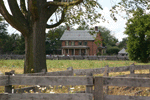 |
Firestone Farm (ca 1885) was a typical Midwestern farmstead of the 1880s when mechanization and the marketplace were rapidly changing farming. Farmers were drawn into the commercial economy. Between 1850 and 1870, the United States experienced what historian Wayne Rasmussen calls the “first American agricultural revolution.” The 1880s Firestone Farm certainly reflects this shift in technology. |
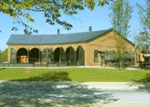 |
DT&M Roundhouse (ca 1884) is an engine house built exclusively to repair and maintain steam-powered locomotives. Steam trains require a lot of maintenance, and thus roundhouses were crucial in keeping railroads operating efficiently and profitably. They were built by railroad companies all over the United States wherever their engines would need to be maintained or repaired. |
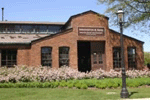 |
Armington and Sims Machine Shop and Foundry (ca 1882) is typical of steam-driven machine shops in the late nineteenth century. It was a general-purpose job shop, which produced a variety of engines, machines and machine parts rather than focusing on the high-volume production of a small number of products. Such machine shops were key components of American manufacturing in the19th century. |
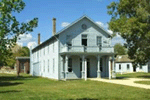 |
Menlo Park Laboratory (ca 1876) was built by Thomas Alva Edison in 1876 in order to pursue his career as a fulltime inventor of electromechanical instruments. Recognizing that he could not be successful working entirely on his own, Edison assembled a team of men—including scientists, craftsmen, machinists, mathematicians, and other assistants—to work with him at Menlo Park. Edison earned almost 400 patents in six years including the electric lighting system. Menlo Park marks the origins of modern technological research and development. |
 |
Charles Steinmetz Cabin (ca 1890s) is a sparsely-furnished, rudimentary wooden structure used as a rural retreat by renowned electrical engineer Charles Proteus Steinmetz (1865-1923). Steinmetz’ electrical formulas enabled the electrical systems seeded by Edison to grow into long distance transmission networks. |
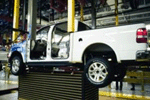 |
Ford Rouge Factory (1917-Present) was the largest and most famous industrial site in the world by 1930. Henry Ford created a virtually self-sufficient manufacturing process in which he owned and operated every aspect of production from the raw materials to the finished automobiles. The Rouge became the symbol of American industrial might and was emulated by industrialists worldwide. It is currently where new Ford F-150s are built. |

